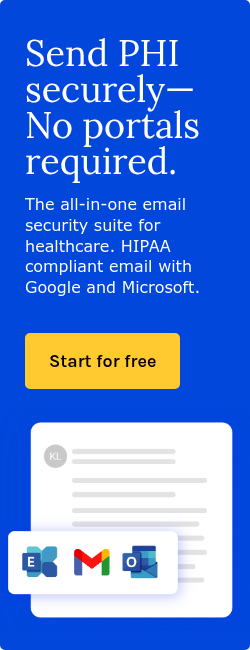
With 83% of healthcare IT teams reporting that legacy systems disrupt daily operations, the question isn't whether to modernize—it's how to do it. As reported in How Does Application Modernization Strengthen Healthcare Cybersecurity? published in HealthTech Magazine, "an estimated 73% of healthcare organizations still use legacy systems," creating operational disruption and security vulnerabilities.
While the challenges of outdated infrastructure, security vulnerabilities, and integration nightmares are well-documented, the path forward requires planning, strategic investment, and a clear understanding of both the risks and benefits involved. The stakes have never been higher, with the American Hospital Association declaring 2023 the "worst year ever" for healthcare breaches, while noting that attacks in 2024 were even more "profound" due to their massive scale.
Balancing continuity with innovation
Addressing the legacy system challenge requires a strategic approach that balances operational continuity with technological advancement. Healthcare organizations should develop a modernization strategy that acknowledges the complexity of healthcare environments while establishing a clear roadmap for transformation.
The cybersecurity dimension of modernization cannot be overlooked. As Melissa Rappl, CISO at Children's Nebraska, explains in the HealthTech Magazine article: "When we talk about leveraging AI and all these amazing tools, the cybercriminals are doing the same thing. It's an arms race, and we need to stay a step ahead." This technological arms race makes modernization not just a matter of operational efficiency, but of organizational survival.
While the upgrade process may seem daunting, the long-term benefits far outweigh the initial investment. Forbes Technology Council's analysis in Is Your Legacy IT Infrastructure Draining Your Budget? Here's What You Need To Know acknowledges that "the average legacy tech upgrade cost hit $2.9 million in 2023," but emphasizes that "companies will save costs down the line by switching to modern, AI-powered IT management platforms, as maintaining older systems will inevitably surpass the expense of upgrading infrastructure."
The modernization process should begin with an assessment of current systems, their interdependencies, and their functions. This assessment forms the foundation for prioritizing which systems to modernize first and understanding the potential impact of each change on daily operations.
Security-first modernization approach
The traditional approach to application development is undergoing a fundamental transformation. As Atif Chaughtai, head of emerging industries at Red Hat, explains in the HealthTech Magazine article: "It's a cultural shift. In the past, software engineers focused on functionality, and security was an afterthought. Now, there's an understanding that security needs to be baked in." This shift represents a move from reactive to proactive security measures, where protection becomes an integral part of application design rather than an add-on feature.
Healthcare organizations must recognize that modernization without security consideration is ultimately counterproductive. Andy Stone, CTO for the Americas at Pure Storage, provides an analogy in the HealthTech Magazine piece, comparing application modernization to home renovation: when you replace a leaking roof, "everything becomes waterproof again. Application modernization works the same way. You've taken a holistic look and resealed your systems with the latest and greatest materials."
Risk assessment and replacement planning
Successful modernization requires a systematic approach to evaluating and prioritizing legacy system replacements. Axel Wirth, Chief Security Strategist of Medcrypt and consultant for the Healthcare Sector Coordinating Council, Cybersecurity Working Group, emphasizes the importance of strategic planning in replacement decisions: "In the end it will be a risk / benefit/cost trade-off, meaning how high is the risk to the device and larger network after device isolation vs. the clinical benefit the device provides vs. the effort and investment of replacing it."
This risk-benefit-cost analysis should form the cornerstone of any modernization strategy. Organizations must evaluate each legacy system based on:
Risk assessment factors:
- Security vulnerabilities and exposure to cyber threats
- Integration challenges and data silo creation
- Maintenance costs and resource drain
- Impact on operational efficiency and productivity
- Regulatory compliance issues
Benefit evaluation:
- Clinical value and patient care impact
- Operational efficiency improvements
- Cost savings from reduced maintenance
- Enhanced security and compliance
- Innovation enablement capabilities
Cost considerations:
- Initial replacement investment
- Implementation and training costs
- Ongoing maintenance and support
- Potential downtime and operational disruption
- Long-term return on investment
Wirth provides practical guidance for managing the complexity of large-scale replacements: "The best advice would be to include cybersecurity considerations in a hospital's replacement planning strategy and to create long-range visibility of the problem. For example, replacing hundreds of infusion pumps will be a logistical challenge and will require a carefully planned rollout including training etc.; or the replacement of a large piece of capital equipment, an MRI scanner for example, may require long lead time due to construction requirements. Replacing a given inventory of legacy systems will not be easy and likely take years, but diligent planning is the best way to get ahead of the game."
Balancing security and usability
One of the challenges in healthcare modernization is maintaining usability while enhancing security. As Stone warns in the HealthTech Magazine article: "You can create the most secure application, but if it's highly unusable, then people will find ways to circumvent the controls." This insight is particularly relevant in healthcare environments where staff need quick access to systems during patient care situations.
The challenge extends to practical considerations like password policies and authentication systems. Healthcare professionals work in fast-paced, high-pressure environments where overly complex security measures can actually compromise patient safety if they slow down access to critical systems. The key is finding the right balance between robust security and operational efficiency.
Read also: HIPAA compliant email
Interim security measures and system isolation
While planning for full system replacements, organizations must implement immediate security measures to protect against vulnerabilities in existing legacy systems. Wirth recommends strategic isolation approaches: "The advisable practice would be to isolate legacy devices as much as possible. Available technologies would be network segmentation (e.g., through traditional VLAN or through more modern approaches such as micro-segmentation or software defined networks (SDN)), or the use of firewalls by either restricting external traffic into the network or, for high risk devices, provide a dedicated firewall for the device itself."
However, he notes important limitations: "There may be some limitations with older devices as they may lack modern networking capabilities that would be required to operate in a highly segmented or zero trust environment. All of this, of course, requires good device inventory visibility and mapping of devices' normal network traffic. There are commercial solutions available that support both, typically referred to as Passive Network Monitoring (PNM)."
These interim measures provide protection while organizations plan and execute longer-term modernization strategies, making certain that patient care continues safely while transformation occurs.
Modernizing procurement and security requirements
Beyond replacement planning, organizations must revamp their procurement processes to prevent future legacy system problems. Wirth emphasizes this forward-thinking approach: "Hand-in-hand with replacement planning goes a revamping of an organization's procurement processes and starting to include security requirements in any solicitation for new equipment and in any future purchasing contracts."
Procurement modernization elements:
Technical security requirements:
- Modern encryption and authentication protocols
- Regular security update capabilities
- Standardized API support for integration
- Compliance with current healthcare regulations
- Network segmentation compatibility
Support and maintenance requirements:
- Guaranteed security patch support timeline
- Regular vulnerability assessments
- Incident response capabilities
- Technical support availability
- End-of-life planning and migration support
Lifecycle transparency:
- Clear end-of-life horizon for new equipment
- Upgrade and migration pathways
- Vendor roadmap visibility
- Long-term support commitments
Wirth notes the long-term benefits of this approach: "This includes technical but also support and maintenance cybersecurity requirements as well as providing visibility of the end-of-life horizon of new equipment that is being acquired. This will, over time, improve an organization's security posture but also will push the 'future legacy' problem further out. With good purchasing requirements we can certainly start to reduce today's legacy problems and should be able to largely eliminate certain categories of risks such as backdoors provided by hard-coded or default passwords."
Vendor management and third-party risk
Third-party vendor management has become a component of healthcare cybersecurity strategy. As Rappl explains in the HealthTech Magazine article: "You're expanding your risk footprint because you're relying on third-party services to protect your data. That's why we have independent, third-party audits. We need to understand what their application development process looks like, where they're storing the data and how they're protecting it."
Healthcare organizations typically work with hundreds or thousands of third-party vendors, including multiple public cloud providers. This complexity requires careful management and ongoing oversight to ensure that security standards are maintained across the entire ecosystem.
Data management and AI-ready infrastructure
Modern healthcare organizations must build data infrastructure that not only solves current integration problems but also enables future AI and analytics initiatives. The foundation for successful modernization lies in establishing data governance and management practices.
Data infrastructure components:
Data governance framework:
- Standardized data definitions and formats
- Clear data ownership and stewardship roles
- Automated data quality monitoring
- Comprehensive data lineage tracking
- Privacy and security controls
Interoperability standards:
- Standardized APIs for system integration
- Real-time data synchronization capabilities
- Master data management processes
- Cross-system data validation
AI and analytics readiness:
- Clean, structured data repositories
- Real-time data processing capabilities
- Scalable storage and compute resources
- Machine learning pipeline infrastructure
- Performance monitoring and optimization tools
Implementation strategies and cloud solutions
Cloud-based solutions offer promising alternatives that can provide the scalability, security, and interoperability that legacy systems lack. Modern platforms designed specifically for healthcare can integrate seamlessly with existing workflows while providing the foundation for future innovation.
Chaughtai emphasizes the importance of flexibility in the HealthTech Magazine article, recommending building applications that can function on multiple platforms and be easily updated: "If you build an application to be very specific to a particular cloud model, and then the vendor updates their security posture, now you have another technical debt. Instead, create a modular approach, where you can plug in or replace security controls whenever you need to."
The importance of long-term thinking in system selection cannot be overstated. As noted in Disrupting Legacy Systems: Preparing for the Next Generation of Health Tech: "Think long-term – Select flexible systems that can be expanded as the practice grows. Choosing flexible systems will help a practice avoid the time and money that would otherwise be spent in the future."
Cloud migration strategies:
Hybrid approach:
- Gradual migration of non-critical systems first
- Maintaining on-premises critical systems during transition
- Cloud-based disaster recovery and backup
- Gradual expansion of cloud footprint
Microservices architecture:
- Breaking monolithic legacy systems into smaller components
- Independent scaling and updating of system components
- Easier integration with modern applications
- Reduced system-wide failure risks
API-first integration:
- Standardized interfaces for all system components
- Easier third-party integrations
- Future-proofing for new technology adoption
- Reduced vendor lock-in risks
Phased implementation benefits:
- Minimized operational disruption
- Manageable financial investment over time
- Continuous learning and improvement opportunities
- Risk mitigation through incremental changes
- Staff training and adaptation time
Building organizational readiness
Successful modernization requires more than just technical planning—it demands organizational readiness and change management expertise. Healthcare organizations must prepare their teams, processes, and culture for transformation.
As emphasized in Disrupting Legacy Systems: Preparing for the Next Generation of Health Tech, stakeholder engagement is important: "Get everyone onboard – This means engaging the staff and the patients right from the beginning. Take their input and these suggestions will help make the process all the smoother."
Readiness factors:
Leadership commitment:
- Executive sponsorship and resource allocation
- Clear communication of modernization benefits
- Long-term strategic vision alignment
- Performance metrics and accountability
Staff preparation:
Training programs are important, as noted in Disrupting Legacy Systems: Preparing for the Next Generation of Health Tech: "Prioritize training – Make sure your team is well-equipped to work with the new system through comprehensive training. Such training helps to avoid the negative impacts and also helps to gain the confidence to rely on the technology."
- Change management support
- User experience design focus
- Ongoing support and feedback mechanisms
Process optimization:
- Workflow analysis and improvement
- Standard operating procedure updates
- Quality assurance protocols
- Continuous improvement frameworks
The cost of inaction
The consequences of failing to modernize extend far beyond technical considerations. As Chaughtai concludes in the HealthTech Magazine article: "We need to consider the cost of data breaches holistically. There are financial aspects and a loss of productivity, but also a loss of confidence from the patient perspective. That damage can last a long time."
This perspective emphasizes that healthcare cybersecurity and modernization are ultimately about maintaining patient trust and ensuring continuity of care. The reputational damage from a major breach can take years to repair, while the immediate financial impact can be devastating.
Learn more: Consequences of a security breach
Measuring success and ROI
Modernization success requires clear metrics and ongoing monitoring to ensure investments deliver expected returns and operational improvements.
The importance of establishing success metrics is highlighted in Disrupting Legacy Systems: Preparing for the Next Generation of Health Tech: "Measure success – It is important to set objectives to assess the effects of these modernization efforts in an organization. Some of the most important metrics may include: shorter wait times, better health outcomes, or less time and effort spent on administrative work."
Performance indicators:
Operational metrics:
- System uptime and reliability improvements
- User productivity and efficiency gains
- Data accuracy and completeness measures
- Integration success rates
Financial metrics:
- Maintenance cost reductions
- Staff time savings
- Revenue cycle improvements
- Total cost of ownership analysis
Security and compliance metrics:
- Vulnerability reduction measures
- Incident response times
- Compliance audit results
- Data breach prevention success
Innovation enablement:
- New capability deployment speed
- AI and analytics project success rates
- Third-party integration achievements
- Future technology adoption readiness
The challenge and opportunity ahead
The modernization journey, while complex, represents an investment in the future of healthcare delivery. As noted in Disrupting Legacy Systems: Preparing for the Next Generation of Health Tech: "It may be difficult to find the right path in the process of modernization and yet it is rewarding to do so. This generation of patients want and deserve a more efficient and high-tech experience and the next generation of providers are no different."
Healthcare organizations that embrace this transformation will not only improve operational efficiency and security but also position themselves to deliver the innovative, patient-centered care that defines modern healthcare excellence.
FAQs
What role does patient data privacy play in modernization efforts?
Patient data privacy must be prioritized throughout the modernization process to ensure HIPAA and regulatory compliance.
How can smaller clinics with limited budgets begin modernizing legacy systems?
They can start by prioritizing high-risk systems and exploring phased or cloud-based solutions with lower upfront costs.
How can healthcare organizations measure the success of modernization projects?
Success can be measured through improvements in system uptime, security incident reduction, and enhanced user satisfaction.
What are the staffing implications of modernization?
Modernization often requires hiring or upskilling staff in cybersecurity, cloud infrastructure, and data analytics.
How do you manage interoperability with legacy systems during phased upgrades?
Organizations can use middleware or API gateways to maintain interoperability while transitioning to newer platforms.
Subscribe to Paubox Weekly
Every Friday we'll bring you the most important news from Paubox. Our aim is to make you smarter, faster.




